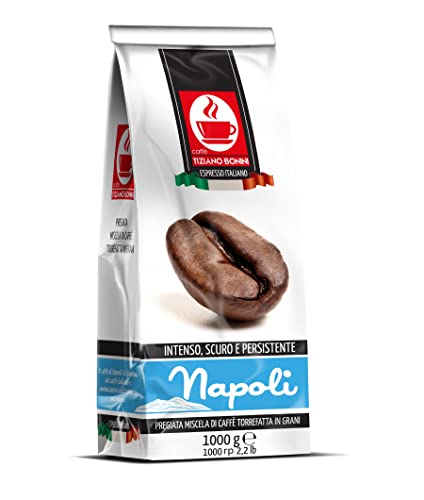What's The Current Job Market For Coffee Beans Types Professionals Like?

Coffee Bean Types: Arabica, Robusta, Liberica, and Excelsa
You've probably heard that different varieties produce distinct flavors. Read on to learn about four of the most sought-after varieties: Arabica, Robusta, Liberica, and Excelsa.
Excelsa beans are one of the varieties of Liberica that is cultivated exclusively in Southeast Asia. They have a more fruity and more tart flavor profile and are often used in blends of coffee to enhance the flavor.
Arabica
Arabica is the most sought-after coffee in the world accounting for 75% of global coffee bean production. Arabica beans are softer and sweeter than Robusta and come in different flavour profiles. The aroma and taste of coffee are affected by the conditions in which it is grown as well as the processing methods employed.
The word "coffee" derives from the Arabic word for berry, and coffee beans are fruit seeds which grow inside bright red berries. It is believed that the ancient Ethiopian shepherds found that their goats were invigorated by eating berries. The cultivation of coffee spread quickly all over the world.
coffee beans wholesale suppliers can be grown at higher altitudes, and they are in a position to thrive when exposed to cold temperatures and lots of rain. This is one of the reasons for why Arabica is considered to be the best tasting type of coffee.
Many specialty coffee shops and roasters focus on ethical sourcing of arabica beans, and focusing on fair wages for farmers and sustainable farming practices. These companies blend arabica beans in order to create unique specialty coffees, which can be used in various brewing methods. Blending can control the aroma, flavor and body, as well as the acidity of coffee. It is usually preferred to get an even and consistent taste that appeals to a wider market.
Robusta
Robusta beans (Coffea canephora) are the second most widely used type of coffee bean cultivated worldwide. They contain more caffeine per bean and are more resistant against pests and diseases. They also contain more chlorogenic acids, which are naturally occurring antioxidants. However, these acids could cause oxidation in the coffee brewing process and may result in undesirable flavors.
The plant itself is more durable than arabica, able thrive in less favorable climate conditions and at lower elevations. It can tolerate warmer temperatures and thrives in direct sunlight. It grows faster and produces more coffee per plant than arabica, which makes it a more cost-effective crop to cultivate.
Although it may sound contradictory the fact is that arabica and Robusta beans are often blended to make coffee blends. If you notice names like Uganda or Kenya on the coffee bags, it's possible that there's also some robusta.
Most roasters employ a mixture of arabica and coffee beans in order to cut costs and maintain the quality. To preserve the integrity of the flavor, it is essential to select a high-quality beans from a source you are confident in. This can be achieved by purchasing your beans direct from a farmer.
Liberica
Liberica beans have a shape similar to a football which is why they are different from other types of coffee beans. They have a smell that is fruity, floral and smoky. They are often added to other coffee bean varieties to add a more intense, fuller flavor.
Liberica coffee beans are available in West Africa, Malaysia (Borneo) and Southeast Asia. They are adaptable to humid, hot climates and can thrive at low altitudes. They also have a more resistant to diseases than Arabica and Robusta.

These characteristics make them ideal for growing at home. Online, you can buy seeds from a variety of sources. However, it is best to purchase the beans from local producers to ensure high-quality. The best conditions for growing Liberica coffee include fertile deep volcano soils, with moderately acidic as well as sufficient annual rainfall.
Excelsa is a different type of coffee bean. It was once classified as a separate species, but it has since been classified as a Liberica variant. These coffee beans are elongated ovals that are cultivated on 20-30-foot coffee plants that are situated at medium altitudes. They have a unique taste that is both tart and fruity and has made them a preferred option in blends made by home. They are also lighter on scent and caffeine than Arabica and Robusta, but still have a distinctive quality of flavor.
Excelsa
Although they're the fourth most popular kind of coffee beans, Excelsa beans aren't as easily accessible as Arabica or Robusta. In fact they were regarded as an individual species of coffee plant until 2006 when they were changed to a synonym for Coffea liberica var. dewevrei. They are produced in Southeast Asia today and account for 7% of the world's production of coffee. These coffee beans have a distinctive teardrop-shaped shape and possess an eerie, dark taste. They're frequently used in blends to add body and a full tart, ripe fruit flavor.
Arabica beans are the most popular, and are renowned for having a the most delicious taste. They thrive in tropical and warm climates as well as at higher altitudes. They also have a hint of acidity. When roasted and brewed properly they may be flavored with notes of nuts, chocolate, or even fruit.
Robusta is the second most sought-after coffee in the world and is responsible for 40% of the coffee consumed around the world. Robusta is rounder and smaller, but contain twice the amount of caffeine as Arabica. They also have more bitterness than the other two varieties, and tend to have woody and earthy undertones.
Once you've mastered the four most common types of coffee beans you can now choose the perfect cup. If you prefer a smooth and delicate flavor pick an arabica or a blend of arabica beans and robusta beans.
